posted in
Knives by
Kathy Maister
I love my V-Slicer! It cost $29. and was one of my best kitchen investments. This hand operated cutter is also known as a mandolin. I’m not usually a big fan of buying gadgets. There are many useless gadgets on the market that take up precious storage space and never get used. However, this one actually gets used – a lot!

V-slicers are used to cut firm fruits and vegetables. The shape of the cut depends on the blade used. You can mince, chop, slice and julienne, which means to cut into strips.
My V-slicer is made of heavy duty plastic. You can buy the stainless steel version for about $150. The more expensive models come with more cutting blades and have legs to stand on. Unless you do a TON of cutting or are a professional chef, my advice is to go with the less expensive version.
The blades are REALLY sharp. Always use the holder when cutting. The holder has spikes on it that hold the fruit or vegetable while cutting.
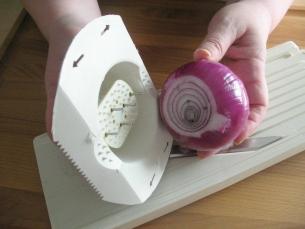
Jam the fruit or vegetable you are using onto the spike. (I’m using an onion.)
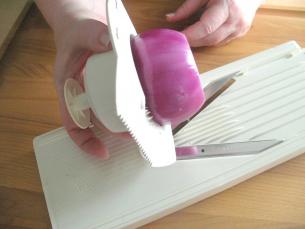
The arrows on the holder indicate which direction you should be slicing. Press down firmly and start slicing.
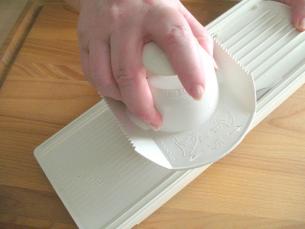
Here I have made incredibly thin slices of onion.
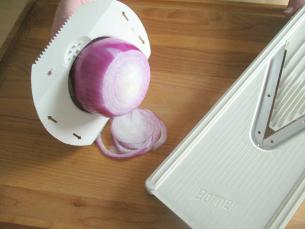
By adjusting the plate under the blade I can make thicker slices.
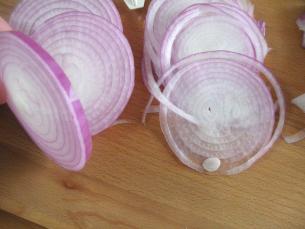
My V-slicer came with three blades.
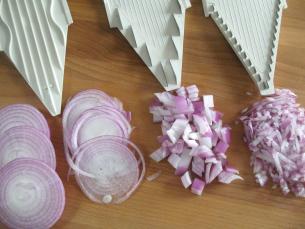
If I wanted to make French fries I would use the center blade shown above.
Chopping or slicing, particularly onions literally takes only seconds with a V-slicer — see the picture below.
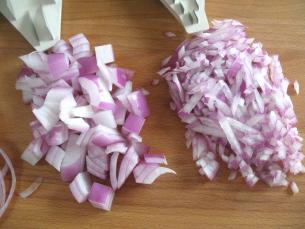
You can see a V-slicer “in action” on my French Onion Soup video.
Cheers!
posted in
Knives by
Kathy Maister
I wash my large knives by hand, with a soapy sponge.

Always keep the blade pointed away from you.
I do not recommend putting large knives in the dishwasher. Small paring knives, with the point down, are fine in the dishwasher, as long as they don’t have a wooden handle. (Wooden handles and dishwashers don’t mix.)
Large knives in the dishwasher are an accident waiting to happen. They could nick or chip dishes and glassware as well as the dishwashing rack itself. (Once the dishwasher rack gets nicked it may well start to rust. Those racks are REALLY expensive to replace.)
If you wash your dishes in a dishpan of soapy water DO NOT toss the dirty knives in as well! Having to retrieve those knives without being able to see where you’re groping is a really scary thought!
Dry off knives with a soft dish towel or paper towel. Remember – with the blade always pointed away from you.

Be sure to check out my video on Three Good Knives!
posted in
Knives by
Kathy Maister
Graters are a great addition to your collection of kitchen utensils — you’ll need them both for cheese and vegetables. They come in many different sizes and shapes.
The box grater…
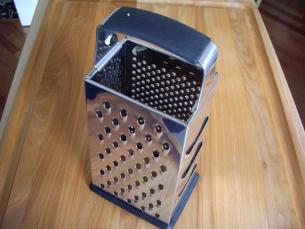
…which you can buy for less than $10 offers a different grating option on each of its four sides.
I have taken a wedge of Parmesan cheese…
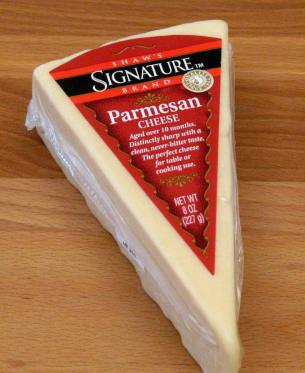
…and shredded some on each side of the box grater.
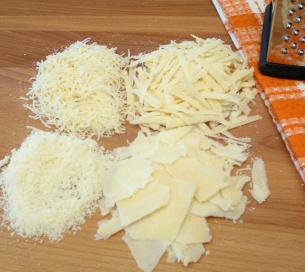
It shreds from very fine…
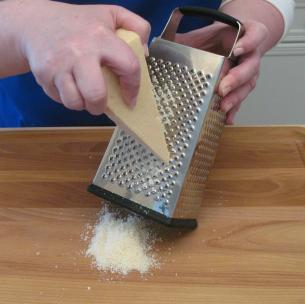
…To slightly bigger…
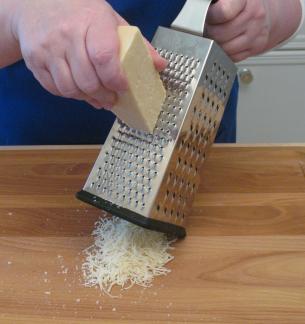
…to even bigger shreds.
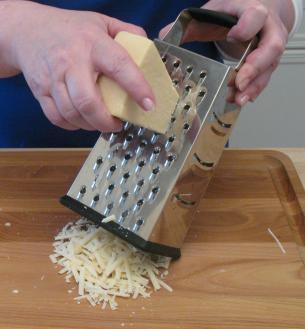
Then to what almost looks like fine slices of Parmesan.
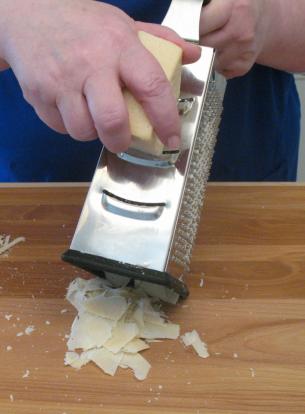
Shaved Parmesan
Recipes should tell you if something should be finely grated or coarsely grated. Graters are very sharp and you have to be careful not to shred your knuckles along with the cheese (or vegetable) you are shredding! All you need to do is firmly hold onto the grater and with a downward stroke, start grating.
Flat graters work well and take up only a little space in the drawer. However, they only offer you only one choice for shredding size.
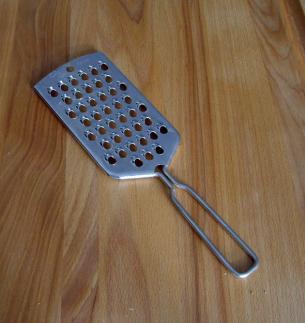
You can buy already-grated cheese in the dairy section of your grocery store. It is usually more expensive than grating your own block of cheese, but is certainly convenient. However, note that store-bought grated cheese dries out very quickly.
Many types of cheese, such as the Gruyere that I use in making my quiche, are not available in a grated format.
Cheers!

























